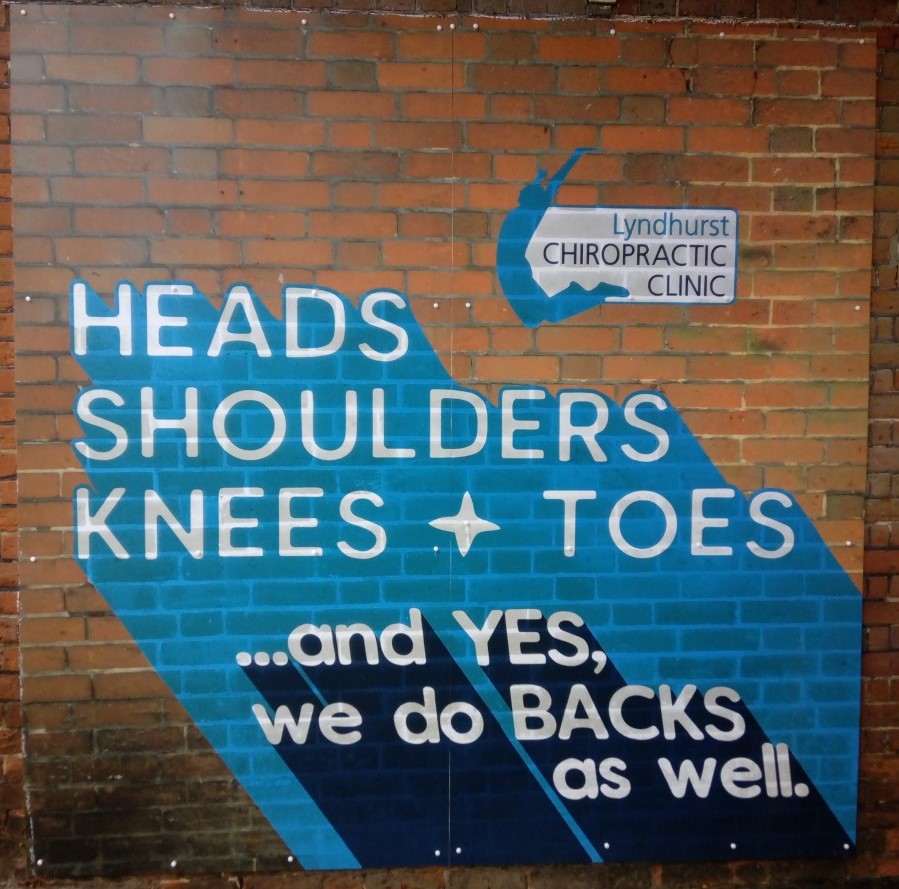
Where does it hurt?
Where does it hurt?
We are always delighted to discuss any problems or concerns that you have, either over the phone or in person. Give the clinic a ring on 023 8028 4666 or drop us an email and one of our chiropractors will call you back.
If you think that you have a problem that we have not mentioned here, then please give us a ring and we can discuss whether we are likely to be able to help.
Patients frequently mention headaches, and once we have established that there is nothing of concern causing the headaches, we can discuss whether chiropractic care might be useful. If the headache is caused by muscles and joints in the neck (‘cervicogenic’ headache), then we can start to treat the neck and the headaches are likely to improve. There are some types of headache that need to be seen by a doctor, but we are trained to identify these headaches and to make the appropriate referral.
Book an AppointmentNeck pain and stiffness is a common presenting complaint here in Lyndhurst, and is typically caused by stiffness in the joints or spasms in muscles. There is frequently a postural problem, either desk, driving or sleeping, aggravating things. These sorts of neck problems usually respond well to a combination of manual therapy, postural changes and strengthening exercises.
Book an AppointmentThe most common cause of shoulder pain in adults is some form of rotator cuff disorder. Pain felt when trying to raise the arm to the side, when lying on the affected shoulder and when dressing or undressing are all signs of a rotator cuff or associated problem. Thankfully, chiropractors are well able to identify and manage most soft-tissue shoulder complaints with a combination of manual therapy and home exercises.
Book an AppointmentPain around the elbow is frequently associated with a repetitive strain on the tendons and their attachment to the bones in the elbow. Depending on the exact location and muscles involved, this is typically referred to as Tennis or Golfers elbow. Desk or working posture may also aggravate matters. Chiropractors can diagnose and manage the elbow pain with manual therapy and exercises, and will usually look through the rest of the arm and shoulder for any biomechanical issues likely to prevent recovery.
Book an AppointmentThe human spine is a remarkably robust and reliable structure, but 21st century living means that back pain is common. Most of the time back pain responds really well to hands-on therapy, advice and exercise, and this is well supported in the scientific literature. Occasionally, back pain is a sign of something more serious, and we are trained to identify any worrying signs and to direct you as appropriate.
Sciatica refers to leg pain that is caused by irritation to a nerve as it leaves the spine and passes down the back of the leg. There are several causes of nerve irritation including a bulging (“slipped”) disc or degenerative changes to the joints and ligaments in the low back. We can diagnose the likely cause of the irritation and help to make the sciatica more manageable with specific advice on how to move without causing further irritation to the nerve, as well as to mobilise the joints and soft tissues in the low back.
We can arrange xray and MRI scans and we frequently liaise with GPs to get you the most appropriate care for your condition. We are therefore the ideal first point of contact for any back problems or sciatica that you may have.
Book an AppointmentKnees and hips are the largest joints in the body and because they are weight-bearing, they are prone to wear. Surgical management of a worn knee or hip is now a very regular and routine procedure, and patients usually do well following surgery. Chiropractors have an important role to play in managing arthritic joints by keeping things moving as much as possible and by advising on exercises to strengthen the muscles around the joint. Manual therapy and home exercises can slow the rate of wear and make the joint more comfortable with the aim of delaying surgery for as long as possible.
Book an AppointmentAnkle sprains are a commonly occurring injury both in everyday life and within sport. Achilles tendon and plantar fasciitis problems cause pain at the back of the ankle and under the sole of the foot, typically towards the heel. These problems respond well to the appropriate therapy and exercise regimes and we are ideally placed to help.
Book an Appointment